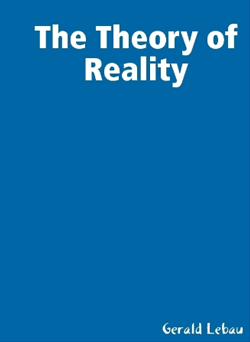Anyone who wants to understand everything in the physical universe should read this book. It explains these things in terms and equations a high-school student can understand. Any physicists who read it will fully understand what the universe is made of and how it operates, thus where and why their present theories are almost completely false despite the fact that their equations are experimentally correct.
The author began this work thinking he had completed the answers he intended to present. Along the way, however, fine details of such explanations posed new problems to him. Fortunately, to my own surprised amazement sometimes, the new problems did get solved. Each new solution, I'm pleased to report, helped solve the next ones. For each such new solution the confirmatory evidence lies everywhere, in the reports and articles of existing Science. One such study, concerning "entropy", is included herein. Another, on the nature of heat, remains an ongoing background theme introduced in Part One. It assumes a central role in Part Two. It is answered in part four.
There are many complex things I have to tell you concerning atomic structure and how it works, about what a quantum is (when it is) and a photon (which doesn't exist until it does); and mysteries like that which only come bright and clear after the needed concepts are in place. I want to tell it to you all at once, but that is impossible.
An orderly progression requires that new concepts be presented before discussions involving them ensue, rather than be alluded to in ways intended to assure the reader that what he may not understand at the moment will be made clear later. It is unacceptable to leave the reader in the dark along the way if it can be avoided. He should be allowed to understand each argument as it arises, rather than after the fact at some later time.
Accordingly, the author has to continually judge the ever changing mind-set of his readers and how their prior concepts are revised (or even cancelled!) as they digest what's offered. It is this author's opinion that if one cannot make his answers easy to understand he doesn't have the right answers yet himself. Most of the time we can set forth answers in an orderly progression. Sometimes, however, deep problems have to be explored in order for the answers to be credible to more learned readers.
The mind is compartmentalized. Different programs exist in different compartments. Some of them sometimes conflict. New conclusions sometimes contradict the old embedded ones. The old ones have many connections (memory) which impose their own old-fashioned inertia against change even though the changes are clearly better. As the top Chinese officials [relatively] recently proclaimed, however, "It's the cat that catches the most mice that is the best cat; regardless of its color or its name." The reader is asked to suspend his own brain's bureaucratic preconceptions which might restrain him from understanding and following a better path.
We shall find that the kinetic atomic theory - that matter is made of ultimate particles - got in the way of correct understanding of the equations that describe and generalize experimental results and of the physical experiments that help refine those equations. As we study the actions of a real material that has no voids anywhere, as compared against the explanations based on a void space with separate particles moving about within it, you will gradually understand many things.
As you do you will see why the basic-particle theory is responsible for the present belief that nature is ultimately incomprehensible to Man, thus why mathematical equations have replaced comprehension as the goal of theoretical physics. You will see why some of our deeply embedded programs need to be changed and how incredibly hard it is to do that. Along the way perhaps you may find some samples of the fun and games Science can be.



